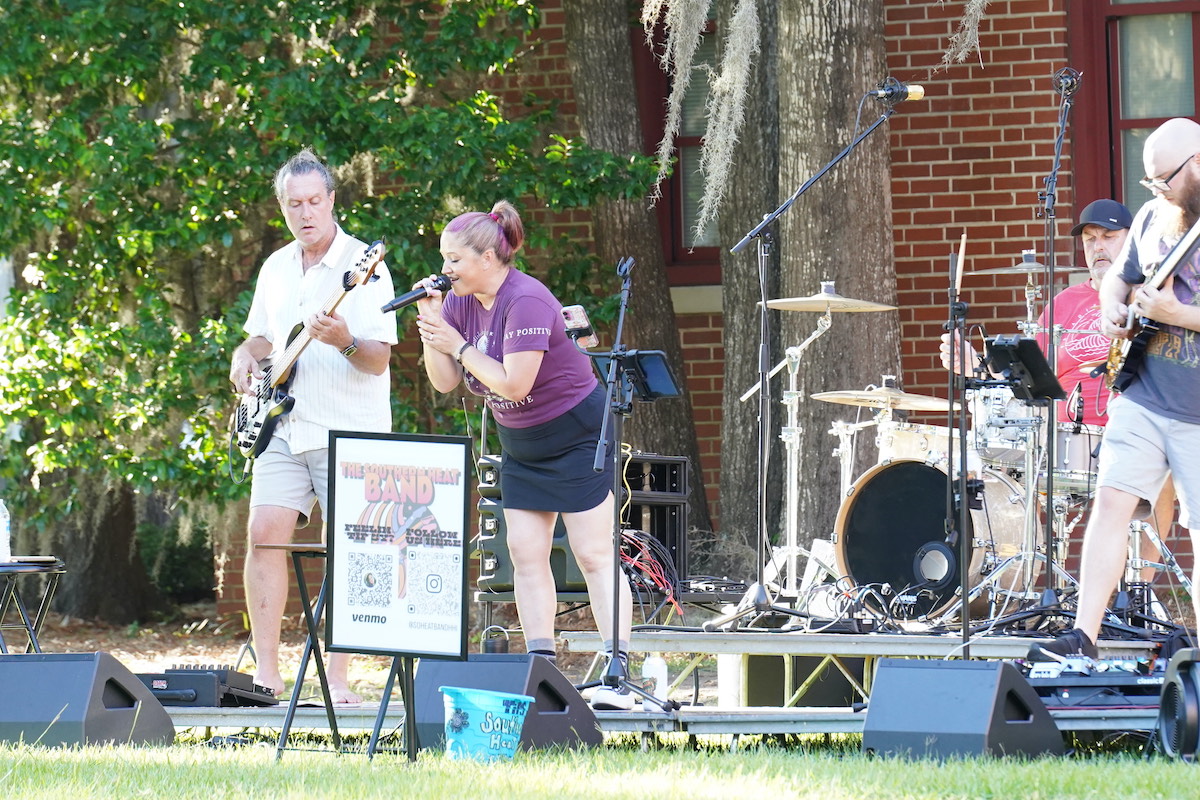By Alan Schuster
Verdi’s “Il Trovatore” by The Met Opera: Encored will be showing at the USCB Center for the Arts on Wednesday, July 17, at 1 p.m.
Francis Toye, Giuseppe Verdi’s preeminent biographer, wrote this about “Il Trovatore” in his book, published in 1931: “It is perhaps the nearest approach to a purely singers’ opera that Verdi ever wrote …. with its extraordinary

wealth of melody, that assures its triumph.” At its premiere in Rome in 1853, the entire final act had to be encored in its entirety. And yet, it was not flawless because while the music was incomparable, the libretto was inscrutable. But surprisingly, while it doesn’t make much sense, the melodies are so beautiful that one hardly pays attention to the plot or the words.
Principal cast: Count Di Luna, a general in the King’s army; Ferrando, a captain of the guard; Leonora, a lady-in-waiting; Azucena, a gypsy woman; Manrico, her presumed son and rebel commander.
In early 15th century Spain, Ferrando is recounting a story to his men. Many years ago, when the Count was a little boy, his brother was bewitched by an old gypsy woman. When she was burned alive at the stake, her daughter, Azucena, was determined to avenge her death. One night the Count’s brother disappeared, and the bones of a child were found where the gypsy woman had been killed.
Leonora is in love with Manrico, a troubadour. One night she thinks she hears his voice and hastens to meet him — but it is the Count, also in love with her. The men duel over Leonora, and Manrico is injured. At a gypsy camp, Azucena nurses him back to health. He thinks that she is his mother; the truth is that when she stole Di Luna’s brother so long ago, she threw her own child into the fire by mistake and then kept Manrico as her own.
Believing Manrico to be dead, Leonora decides to enter a convent. Di Luna tries to kidnap her, but Manrico arrives in the nick of time. Di Luna’s men capture Azucena, and when it becomes known that she is the daughter of the old gypsy woman, she too is sentenced to be burned at the stake.
Manrico and Leonora are about to wed when he hears of Azuena’s capture and rushes off to rescue her. Manrico is now a prisoner in Di Luna’s jail. Leonora implores Di Luna to spare him. She offers up herself in his place and Di Luna accepts. Leonora swallows poison hidden inside her ring. Manrico, now free, rejects his freedom when he realizes what she has done to gain it. Leonora dies in his arms. Realizing he has been duped, Di Luna decrees that Manrico must be executed. As he is beheaded, Azucena tells Di Luna that he has just murdered his own brother.
This, believe it or not, was the shortest synopsis I could find on the internet. But opera historian Dennis Forman offers a much simpler one: “It’s the one where the gypsy woman throws the wrong baby onto the bonfire and thus causes the grown-up unburnt baby to be killed by his brother.”
Acts I & II highlights. Leonora: “Tacea la notte” – (How calm the night), one of several outstanding arias for her, expressing feelings for the mysterious troubadour. The immensely popular “Anvil Chorus” features gypsies hammering out a fine tune with lots of “zingarella.” Di Luna’s “Il balen” (Her fair cheek…), a beautifully-flowing melody which must make tenors jealous that Verdi assigned such a gem to a villainous baritone.
Acts III & IV highlights. Another fine chorus, war-like in spirit, begins this short act, as the gypsy soldiers prepare for battle. Manrico’s best moment is “Di quella pira” (Ah, the sight of horror… ), as he rallies his men for battle with a rousing finish. A haunting five minutes of Verdi magic begins when Leonora appears on a dark street below a prison tower where Manrico awaits execution. Before she begins a moving and anguished aria about his doomed fate, a church bell tolls, monks begin a solemn “Miserere” chant, and a death march emerges from the orchestra. Manrico, unseen from a window above, sings a marvelous farewell to life and love, softly supported only by a harp. When their voices join at the end, the brilliance of this mini-scene will likely become an unforgettable memory for those who hear it for the first time.
The final ten minutes are a steady stream of inspired dramatic action. Manrico and Leonora come together moments before both are doomed to die, singing a joyful reconciliation. She dies from a poison pill; he is beheaded; and Azucena, near death herself, tells a shocked Di Luna that he has killed his brother. She cries out “Sie vendicata, o madre!” (You are avenged, mother) as the curtain closes.
The cast requires four great Verdian singers, and David McVicar’s traditional production will meet all expectations. They include Sondra Radvanovsky as Leonora; Marcelo Alvarez as Manrico; Dmitri Hvorostovsky as Di Luna; and the exceptionally-fine mezzo, Dolora Zajick, as Azucena.
Milton Cross, famous for 43 years as the voice of the Met’s radio broadcasts, calls Il Trovatore’s music as being “swift, spontaneous and stirring … and no weakness in the plot can undermine the power and drive of its score.” Bravo!
All tickets are $15; no reserved seating. Box office opens at the USCB Center for the Arts one hour before the 12:55 curtain. For more information, call 521-4145.






